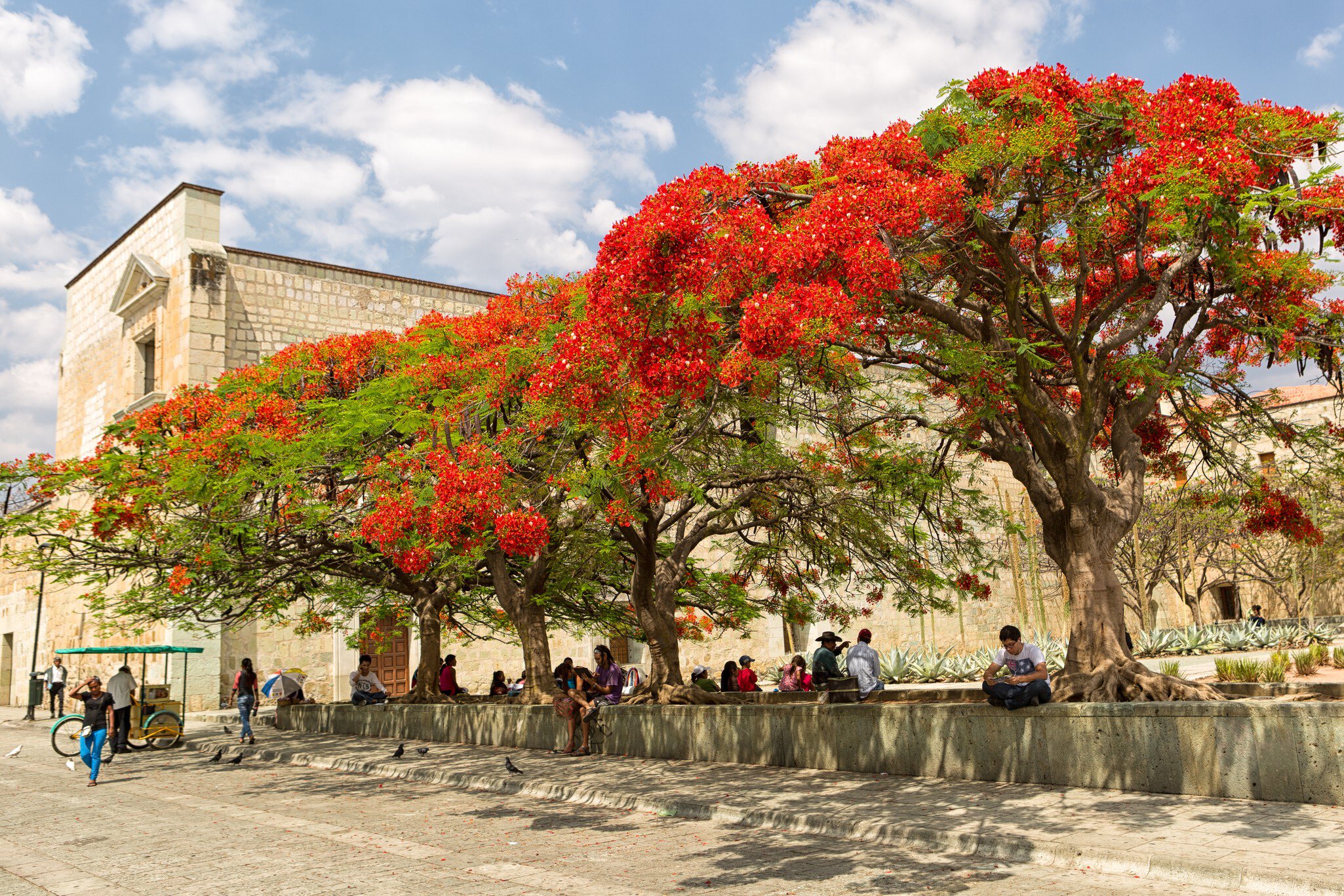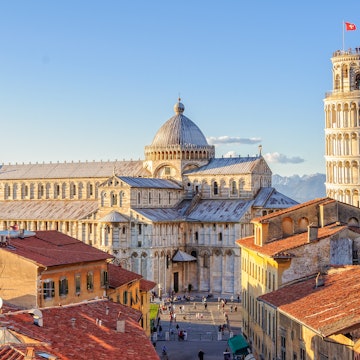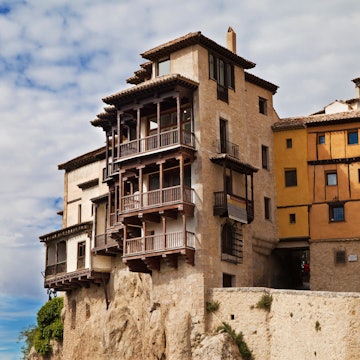
The 9 best things to do in Zaragoza, Spain



Join the festivities at Fiestas del Pilar in October in Zaragoza. Topillo/Shutterstock
The defining image of Aragón's capital is the multi-domed Basílica del Pilar, one of Spain's great churches, rising above the Río Ebro. The river is the reason there's been an important city here since Roman Caesaraugusta was founded in 14 BCE. The soaring basilica, the grand La Seo cathedral and the Aljafería, Spain's finest Islamic building outside Andalucía, pay testament to Zaragoza's storied past.
The appeal of Zaragoza (Saragossa) goes well beyond its monuments. It is also well stocked with the art of local lad Francisco de Goya, the genius painter who was born a short horse ride away in 1746. And it enjoys one of the best tapas and bar scenes in Spain – notably in the small central quadrangle of lanes known as El Tubo. Joining in with the locals as they move from one bar to another here is an unmissable Zaragoza experience.
Read on for the best things to see and do in one of Spain’s most underrated regional capitals.

1. Admire the Basílica del Pilar
The ethereal image of the multi-domed Basílica de Nuestra Señora del Pilar reflected in the Río Ebro is a potent symbol of Zaragoza. The immense baroque cavern of Catholicism stands on the site where, the faithful believe, the Virgin Mary appeared to Santiago (St James the Apostle) atop a pillar of jasper in 40 CE, leaving the pillar behind as testimony of her visit. A series of increasingly grandiose churches built on the site has culminated in the enormous basilica that stands today.
The famous pillar, in the east-end Santa Capilla, is topped by a small 15th-century sculpture of the Virgin and child, and concealed inside an elaborate silver casing, which is itself usually three-quarters hidden by a long mantle (except on the 2nd, 12th and 20th of each month).
A tiny oval-shaped portion of the pillar is exposed in the passage behind, where steady streams of people line up to brush lips with its polished cheek.
Hanging from the Santa Capilla's northeast column are two slim bombs that were dropped on the basilica during the civil war and failed to explode. Nearby in the north aisle, a fresco in the third cupola is a Goya, Regina Martyrum (Queen of Martyrs), painted in 1781. Goya's earlier Adoración del Nombre del Dios adorns the ceiling of the coreto at the church's far east end.
Planning tip: For magnificent views over the basilica's domes and the city, don't miss taking the lift up the northwest tower and then climbing 109 steps to the viewpoint. If access to it from inside the basilica is closed, just walk round outside.
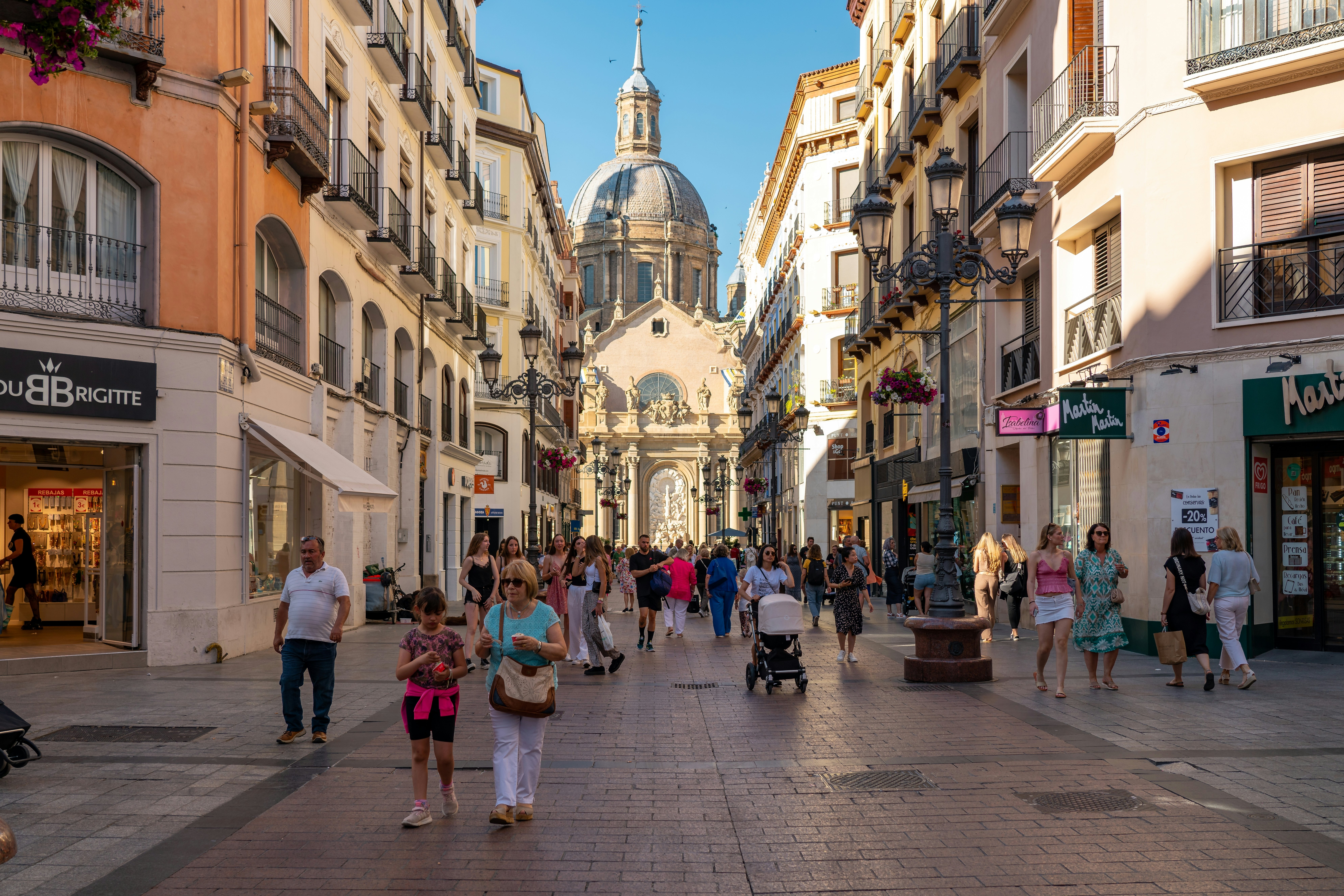
2. See La Seo and the Museo de Tapices
Though overshadowed in scale by the basilica, Zaragoza's cathedral, La Seo, at the other end of the enormous Plaza del Pilar, is arguably a finer work of Christian architecture. Built between the 12th and 17th centuries, it stands on the site of Islamic Zaragoza's main mosque (which itself stood on the Roman forum's temple site), and displays a fabulous spread of styles from Romanesque to baroque.
La Seo's northeast external wall is a masterpiece in the Mudéjar style of Muslim artisans under Christian rule, deploying classic brickwork and colorful ceramics in complex geometric patterns.
Inside, beautiful fan vaulting adorns the ceiling while the numerous elaborate chapels, framed by encrusted stonework, ring the changes from the eerily solemn Capilla de San Marcos to the golden baroque baldachin of the Capilla del Santo Cristo. The exquisite 15th-century alabaster high altarpiece is well worth scrutiny too.
Detour: The attached Museo de Tapices houses a collection of Flemish and French tapestries considered the best of its kind in the world.
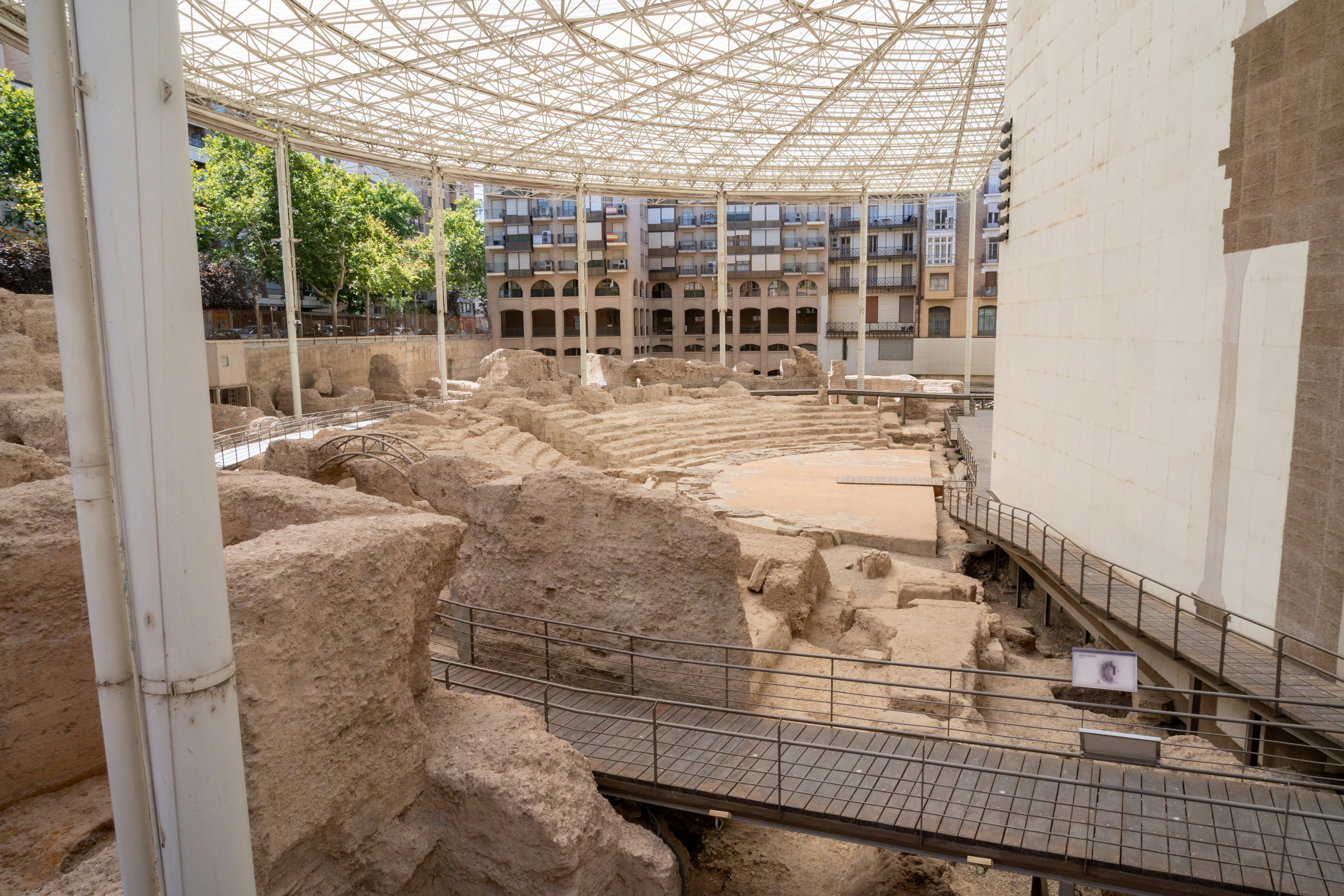
3. Learn about Roman Caesaraugusta
Buried below Zaragoza's streets lies an older city, Caesaraugusta, the Roman town that flourished as one of Hispania's most illustrious and strategically important colonies.
As the millennia passed, Caesaraugusta disappeared beneath the ever-growing city – until archaeological work in the 1980s and '90s brought it to light again. Today a quartet of museums showcases the discoveries, with cleverly designed exhibits and multimedia that provide a real sense of how life was back then.
The Museo del Foro de Caesaraugusta shows the excavated substructures of the Roman city's forum; the Museo del Puerto Fluvial displays the river port installations; the Museo de las Termas Públicas is home to the public baths; and – best of all – the Museo del Teatro de Caesaraugusta showcases a 6000-seat theatre that was one of the largest in Hispania.
Planning tip: Consider buying the Ruta Caesaraugusta ticket, valid for all four Roman museums.
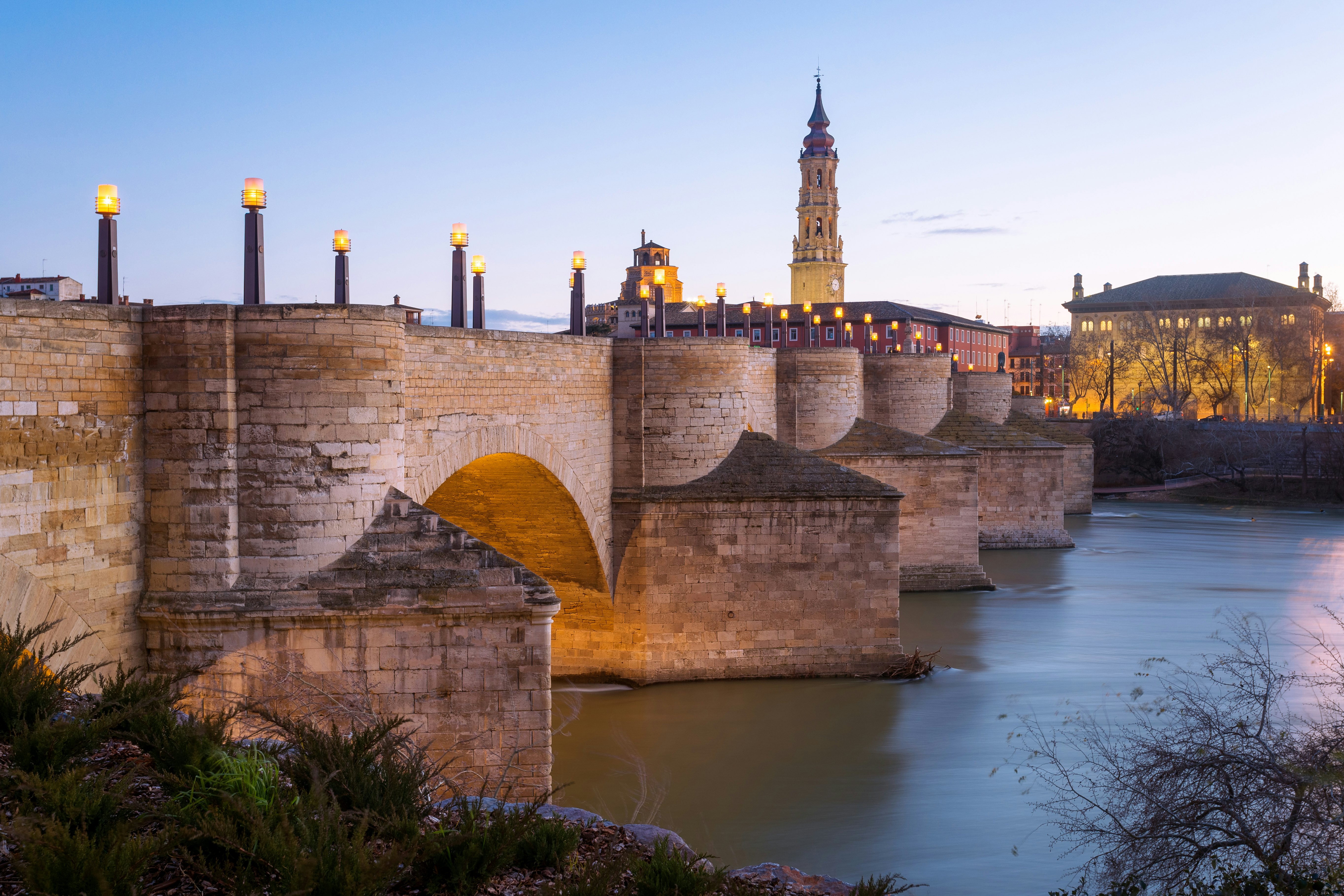
4. Take yourself on a self-guided walking tour
Start this 2.5km walk (it’ll take around three hours) at the lively, recently refurbished Mercado Central, a 130m-long, art-nouveau food market dating from 1903. Outside its north end a statue of Caesar Augustus (the Roman emperor from whom the name "Zaragoza" is ultimately derived), stands before a stretch of the Roman city walls.
Now head east along Plaza del Pilar to the mid-20th-century Ayuntamiento (City Hall), fronted by statues of Zaragoza's guardian angel and its patron saint San Valero, and the elegant 16th-century La Lonja trading exchange next door, now an exhibition hall. If it's open, go inside to see the soaring stone columns from which the ribs of the beautiful vaulted ceiling sprout like palm fronds.
Behind La Lonja, the 15th-century Puente de Piedra, Zaragoza's oldest bridge, spans the Ebro. Pass the north wall of La Seo, with superb Mudéjar decorative tiling and brickwork, then head southeast through small streets to the 14th-century Iglesia de la Magdalena, with a beautiful Mudéjar tower.
The Magdalena neighborhood has a distinctly alternative ambience, as the street art, vintage clothing shops, vegetarian cafes, wafting aromas and political posters will tell you. Stop for a bite or drink here or at Café Nolasco, across the street from the Rosario de Cristal, a stunning display of religious stained glass inside a church building.
South of here you can take in a great view over the old Roman theatre from street level. Head west to relax in one of the cafes around plane-tree-shaded Plaza de San Felipe, where the Museo de Pablo Gargallo displays sculptures by the man recognized as Aragón's most gifted artist after Goya.
Planning tip: The city tourist office's Zaragoza Family Card gives useful discounts on attractions, transport and accommodations.
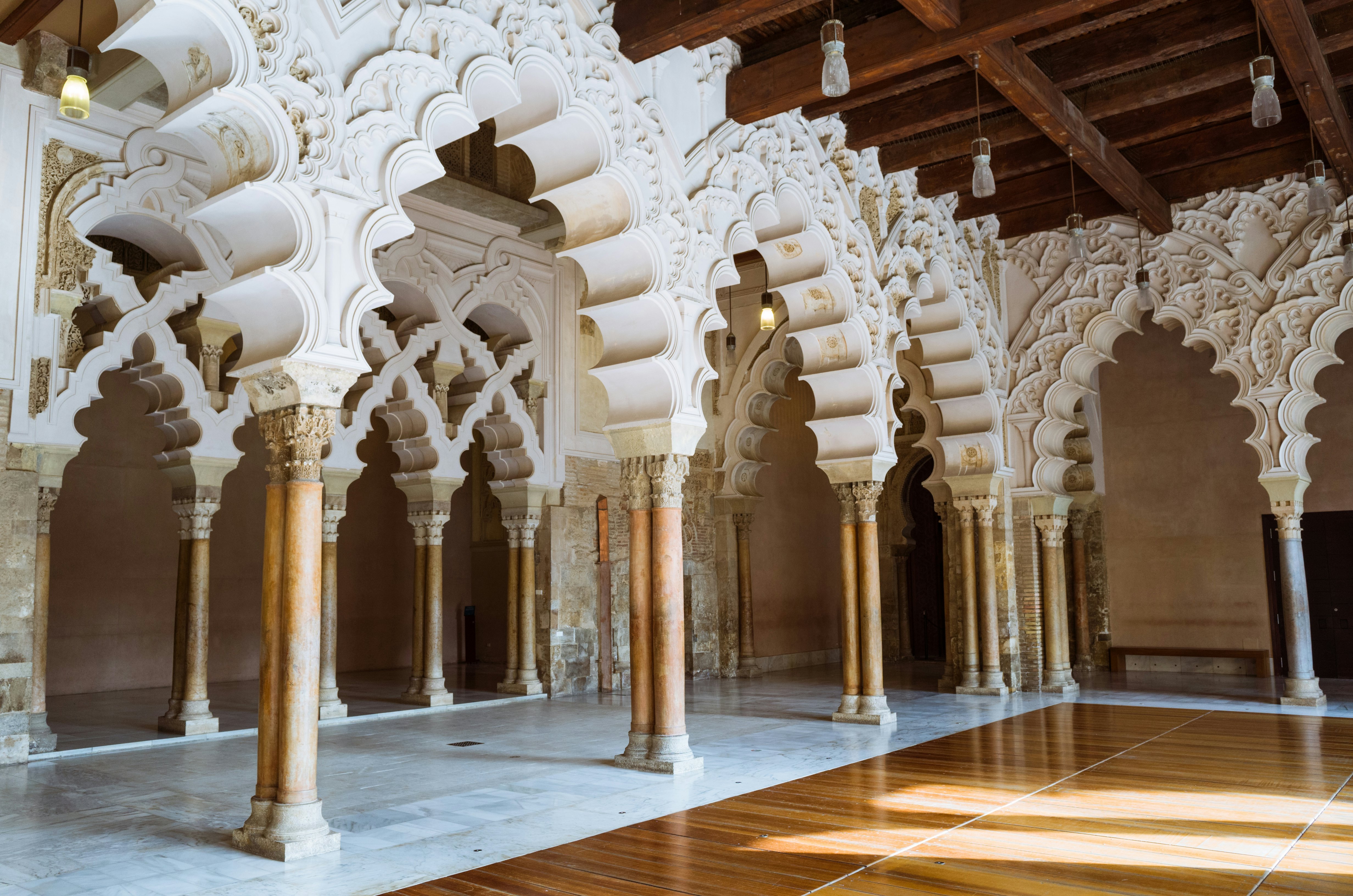
5. Marvel at the architecture and artistry of the Aljafería
The dour castle-like exterior gives no hint of the ornate decorative joys within the UNESCO World Heritage-listed Aljafería. Built as a fortified palace for Zaragoza's Islamic rulers in the 11th century, it passed into Christian hands in 1118, and in the 1490s the Reyes Católicos (Catholic Monarchs), Fernando and Isabel, tacked on their own palace.
Wandering through its courtyards and dainty archways you can get a sense of the pomp and majesty of both the Islamic court and of its Christian successors.
The Patio de Santa Isabel was the Islamic palace's central courtyard, its northern portico featuring the delicate interwoven arches typical of Islamic architecture's geometric mastery. The octagonal prayer room off the portico's east end and the Salón Dorado, the palace's throne room behind the portico, both show off exquisite detailed sculptural work.
Moving upstairs, you pass through rooms of the Palacio Cristiano Medieval, created by Aragonese monarchs in the 14th century, and the Palacio de los Reyes Católicos (Catholic Monarchs' Palace). This last, especially in the lavish Salón del Trono (Throne Room), contains some superb coffered ceilings in the Mudéjar style.
Planning tip: The Aljafería is again a seat of political power today: depending on working times, you may be able to look into Aragón's regional parliament chamber, installed here in 1987.

6. Follow the trail of Goya
Francisco José de Goya y Lucientes, better known simply as Goya, was born at Fuendetodos, 45km south of Zaragoza, in 1746, and lived much of his first three decades in the city itself.
Today you can make contact with his genius at two main venues in the city. The Museo Goya contains Goya's first self-portrait (1775) and his well-known portraits of King Carlos IV, Queen María Luisa and Félix de Azara, plus four complete sets of his dark and disturbing prints, including the groundbreaking Desastres de la Guerra (Disasters of War), a bitter attack on the cruelty of war. A further 19 of his canvases are displayed in the Museo de Zaragoza.
Detour: Goya also worked his magic touch into the ceilings of the Basílica del Pilar. Outside Zaragoza you can see several Goyas at the Museo de Huesca and visit his modest birthplace at Fuendetodos.
7. Join the party at Fiestas del Pilar
Few countries do parties better than Spain, and if you're a fiesta fan the time to be in Zaragoza is the first half of October, when the city puts on one of the country's biggest celebrations, the Fiestas del Pilar.
From around the 5th to the middle of the month, Zaragoza reverberates to a vast program of concerts, parades, fireworks, dance, food and beer fests, markets and exhibitions and a funfair at the Recinto Ferial de Valdespartera on the southwest edge of town.
Proceedings and emotions climax colorfully on Oct. 12, the Día de Nuestra Señora del Pilar, with the Ofrenda de Flores (Offering of Flowers). Hundreds of thousands of devotees from around Aragón, Spain and the world, many in bright regional or national dress, process through the city to Plaza del Pilar to deposit a veritable mountain of millions of flowers around the image of the Virgin, which is brought out from the Basílica del Pilar.
Planning tip: Of course you should book well ahead for accommodation in Zaragoza at this time.

8. Dine out on tapas and more
Head to the quadrangle of lanes known as El Tubo, north of Plaza de España, for one of Spain's richest gatherings of tapas bars. This is a quintessential Zaragoza experience and a bubbling scene any night of the year. Just wander around, especially along Calles de la Libertad and Cuatro de Agosto, and see what takes your fancy.
All manner of tapas, with anchovies a speciality, are found at the 150-year-old Bodegas Almau, plus hundreds of wine bottles. It’s open until midnight. Join the El Tubo crowds at Taberna Doña Casta for flavorsome croquettes and big plates of huevos rotos (fried eggs with potatoes). And bringing a touch of Japan and Argentina to Zaragoza tapas, El Ángel del Pincho serves delicate tempuras and empanadas (it’s closed on Mondays). For tasty Mexican-inspired vegetarian tapas, the migrant women's cooperative cafe La Causa is tucked in the offbeat Magdalena neighborhood.
If you’re looking for something more substantive with a warm ambience and Spanish and international fare (steaks, seafood, risotto, pad thai, tacos, fondue) head to Marengo.
The stylish bistro La Clandestina is known for its brunch (with cava), tasty vegetarian creations and excellent cheesecake. Menu items cooked a la brasa (barbecue-style grill) are the speciality at Los Xarmientos; from meat and seafood to asparagus, it tastes better from the grill. And for an upmarket meal, book a table at the cozy dining room at Restaurante Palomeque.
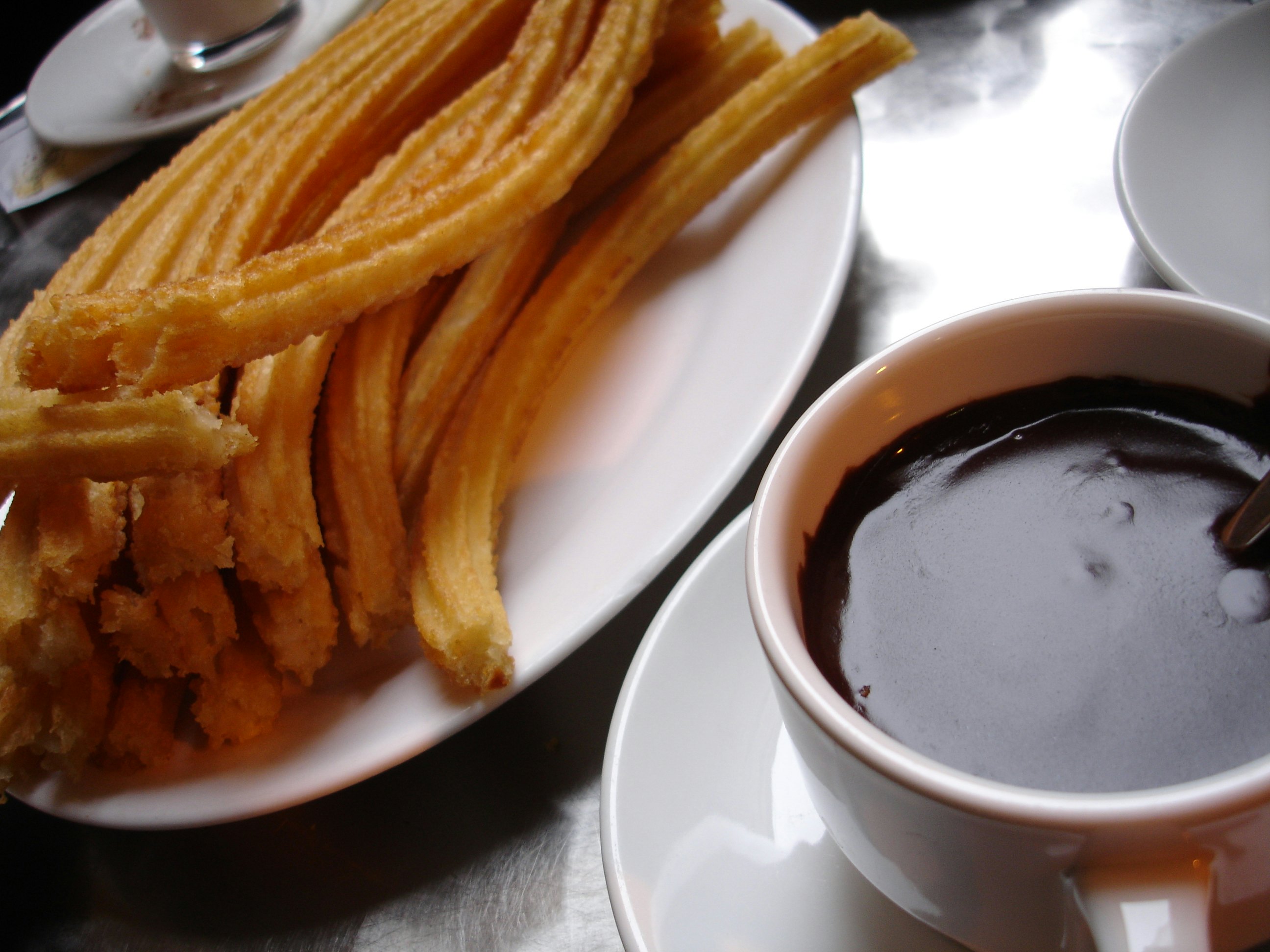
9. Taste chocolate among chocolate aficionados
If you notice an unusual number of chocolate shops around Zaragoza, it's because the city was the first in Europe to take a fancy to the cocoa bean. The story goes that Fray Jerónimo Aguilar, a monk from the Monasterio de Piedra in central Aragón, sampled a cocoa drink in America in the 1530s. When he brought it back to Zaragoza it caused a sensation. Over time the recipe was refined into the hot chocolate we know today (solid chocolate came later).
To drink chocolate in central Zaragoza, visit long-established Churrería La Fama (it's served with churros). For fantastic elaborate chocolate creations to eat, check out Jeff de Bruges, Pastelería Ascaso and Pateleria Fantoba.
This article was adapted from Lonely Planet’s Spain guidebook, published in February 2025.



